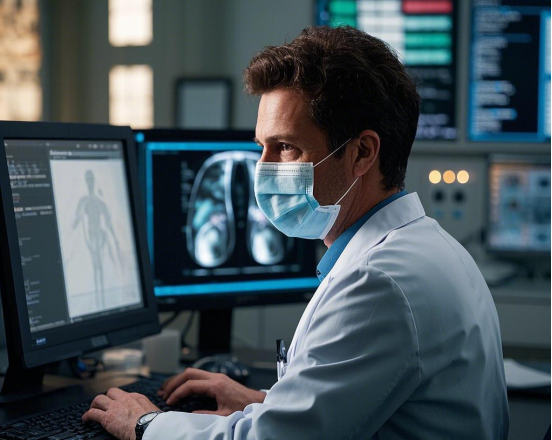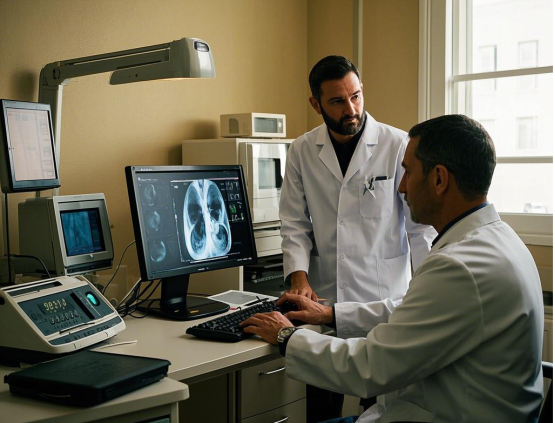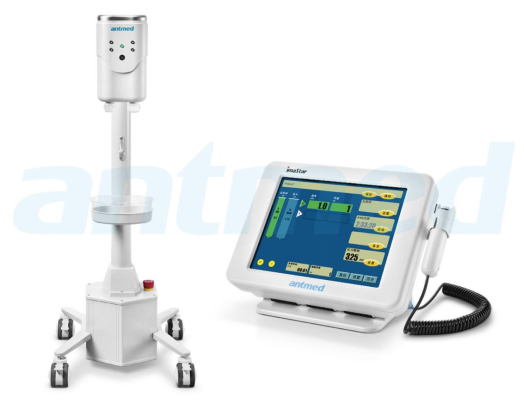MRI vs CT Scans: Different Applications of Contrast Injectors
Medical imaging has come to play a central role in the diagnosis of diseases and the most efficient treatment of diseases. At the forefront of this innovation, contrast injectors play a pivotal role in improving the quality of diagnostic images produced by MRI and CT scans. But how do these injectors work, and why are they so vital to medical imaging?
Let’s explore MRI vs CT scans and dive into the applications of contrast injectors for these modalities; keep reading!

Why Contrast Injectors Are Vital in Medical Imaging
The Role of Contrast Media
Contrast media, also referred to as contrast agents, are substances that help in the delineation of specific tissues, organs, and vessels. These agents are particularly useful for distinguishing unusual structures or abnormalities during imaging.
The Importance of Contrast Injectors
While contrast media is essential, its delivery must be precise for optimal results. This is where contrast injectors come in. These advanced devices administer the media with controlled flow rates and volumes, ensuring better image clarity and consistent diagnostic accuracy.
Contrast injectors also help in:
l Enhanced Image Clarity: By delivering the optimal quantity of contrast media at the right time, these injectors help produce high-definition images critical for detecting even the tiniest abnormalities.
l Patient Safety: Modern contrast injectors reduce the chance of human error during injection, ensuring the media is delivered safely and effectively.
l Efficiency: Automating the injection process decreases procedure times and enhances productivity.

MRI vs CT Scans: Applications of Contrast Injectors
Understanding MRI and CT Scans
Both MRI (Magnetic Resonance Imaging) and CT (Computed Tomography) scans are widely used diagnostic tools, but they serve distinctly different purposes:
l MRI Scans employ magnetic fields and radio waves in order to create clear pictures of the soft tissues.
l CT Scans employ X-rays to perform images of the body in different cross-sectional planes, which gives a better picture of bones and large organs.
Each modality requires tailored protocols and methods for administering contrast agents via injectors to cater to its unique imaging processes.
Contrast Injectors in MRI Scans
For MRI, contrast injectors are used to enhance the imaging of soft tissues. Common applications include:
l Detecting Tumors and Vascular Abnormalities: Contrast media helps illuminate tumors, cysts, and malformations in the blood vessels, aiding in diagnosis.
l Imaging the Brain and Spine: MRI scans with contrast are widely used for detecting conditions like multiple sclerosis, spinal disc herniation, or brain tumors.
l Understanding Muscle and Joint Injuries: Sports injuries or inflammation in joints and muscles can be more clearly visualized with contrast-enhanced MRI.
MRI injectors must be compatible with the strong magnetic field of the machine while ensuring a steady and well-controlled injection.
Applications of Contrast Injectors in CT Scans
For CT scans, contrast injectors are predominantly applied to:
l Visualize Blood Vessels (Angiography): These scans help identify blockages, aneurysms, or vascular diseases.
l Detect Organ Damage in emergency settings, particularly after trauma or accidents.
l Diagnose Cancer or Cardiovascular Conditions by highlighting tumors, abnormalities, or arterial blockages requiring more immediate action.
CT injectors are specifically designed to quickly deliver contrast media, as many CT procedures—like angiograms—require rapid imaging after injection.
CT Scan vs MRI Scan: Tailoring Contrast Injection Protocols
The choice of media and injection protocol varies greatly:
MRI Contrast Media is typically gadolinium-based and administered at slower rates to ensure compatibility with magnetic imaging.
CT Contrast Media is iodine-based, requiring faster injection to provide high-quality, real-time imaging.
Each test's specific needs highlight the importance of advanced injectors to ensure effective media delivery tailored to the modality.

Antmed’s Contrast Media Injectors
When it comes to advanced contrast injectors, Antmed leads the way with innovative solutions ensuring safety, reliability, and precision. Key features include:
1. Enhanced Safety:
l Double confirmation feature with prompts for air purging and injection readiness.
l Automatic slowdown when approaching pressure limits, and injection halt at the limit, accompanied by light and sound alerts.
2. Operator Confidence:
l Real-time pressure monitoring curve displayed on an intuitive interface for operational accuracy.
l Ability to pause and resume injections during the procedure without disruption.
3. Convenience and Durability:
l Wireless Bluetooth communication eliminates additional wiring, making the device ready to use straight out of the box.
l Waterproof design ensures long-term durability, even in challenging environments.
Our injectors demonstrate how technology can bridge the gap between medical precision and usability, ensuring accurate diagnostic imaging for superior patient outcomes.
Conclusion
Contrast injectors are indispensable for modern medical imaging, particularly when it comes to MRI and CT scans. They not only enhance image quality but also ensure patient safety and efficient procedures.
Whether you’re optimizing imaging for soft tissues or visualizing critical structures like blood vessels or bones, the right contrast injector can make all the difference.
To learn more about advanced contrast injector technologies for MRI and CT imaging, contact us today or explore our product range designed with precision and safety in mind!


 Medical Imaging Products
Medical Imaging Products Anesthesia Intensive Care
Anesthesia Intensive Care Cardiovascular and Peripheral Products
Cardiovascular and Peripheral Products



